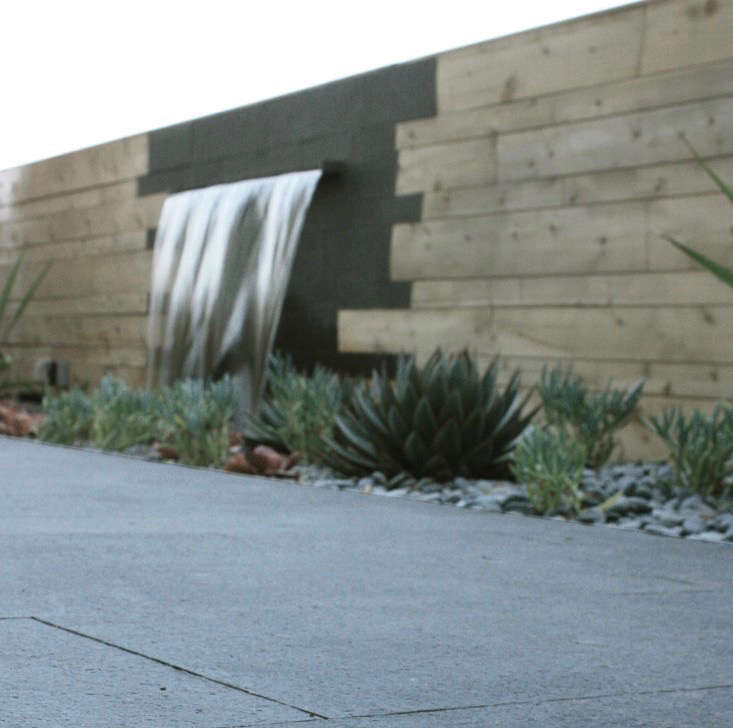A fountain is a celebration. Thousands of years ago, the landscape feature was proof of a successful water delivery system. Water ran downhill into town—if a town was lucky—and there in a central square was a fountain, a burbling public service to announce the arrival of fresh water.
In architecture these days a fountain often is considered as a “decorative” feature, partly because it brings so much pleasure to a landscape. It sounds lovely, that burble. A jet of water is hypnotic to watch as it catches sunlight and throws a fine, bright mist into the air. Other, more prosaic water delivery conveyances—streams, aqueducts, pipelines, rills—handle the drudgery. But a fountain? It’s pure pleasure.
Other water features (including ponds, pools, and even bird baths) also can add life to a landscape. So how do you know if a fountain is the best element to add to your garden or landscape? Read on for everything you need to know about fountains.

What is the history of the fountain?
After 19th-century French archeologists uncovered the ancient city of Lagash (near Ash Shatrah in Iraq), on the 1.5-square-mile site bisected by a river they found a carved basin. It was a fountain that dated to roughly 3,000 B.C. Centuries later, the ancient Greeks and Romans elevated the fountain to an art form, complete with columns and carved nymphs and animals that spouted water from their stone mouths.
In Europe, where public fountains became common architectural features in the Middle Ages, an ornate example from the late 14th century survives in Nuremberg, Germany; the fountain’s 62-foot-high spire is a landmark next to town hall.
In the middle of the 19th century, the United States caught up to the fountain craze. In Frederick Olmsted’s Central Park in New York City stands a dramatic example, 28-foot-high Bethesda Fountain with two tiers of spilling water topped by a winged angel.
What are the different styles of garden fountains?

The first question to answer is which kind of fountain will best fit into your garden. Some different fountain types are:
- Wall Fountains: A good choice for a small garden or courtyard, a wall fountain typically requires less space. Whether freestanding or built in, a wall fountain can have a slim profile—consider the nearly invisible slot fountain shown in the photo above—and can be designed to blend into a landscape if you don’t want it to be a visual focal point.
- Trough Fountains: Fountains that draw their design inspiration from the barnyard, trough fountains are generally simple in style and shape, making them a good choice to complement almost any architectural style.

- Floating Fountains: A spray of water that emerges from a nozzle in the middle of a body of water is sent skyward from a partially submerged floating fountain.
- Courtyard Fountains: Freestanding fountains designed to make a visual statement, courtyard fountains are meant to be viewed from any angle. Generally symmetrical, they may have multiple tiers and a self-circulating pump system.
- Waterfall Fountains: A good choice for rock gardens or on a slope, waterfall fountains work with the force of gravity to move water from higher to lower basins where it can be recirculated by a pump.

How do fountains work?

In ancient days, fountains relied on gravity to move water, creating pressure inside a closed pipeline to push water upward. Modern fountains have the luxury of being able to rely on electric pumps and plastic pipelines to recirculate water.
DIY enthusiasts, garden fountain pumps, components, and full kits—which typically come with a submersible pump, flexible lengths of pipeline to recirculate water, and spray nozzles—are available from sites like DIY Watering, Home Depot, and Aquascape.

For a San Francisco garden, landscape architect Brennan Cox of Berkeley-based Groundworks designed a slim slot fountain surrounded by western black granite. “That whole wall is only about twelve to fourteen inches wide, and behind the wood is an existing concrete wall,” says Cox. “We had to figure out a way to fit in a fountain in basically four inches. Underneath the fountain is a giant bathtub that is a basin and there’s a pump you can’t see, and three supply lines behind the granite face,” says Cox.
For more of this garden, see Steal This Look: An Outdoor Kitchen Hidden from the Tourists on Lombard Street.
Are there design rules for fountains?

Here are some basic design rules to follow when you add a fountain to your landscape:
- Stay away from trees: “Fallen leaves, insects, and bird droppings contaminate the water and can clog up the suction filters in the pumping system,” says Royal Fountains.
- Consider ambient noise: One of the loveliest features of a fountain is the sound of running water. Site a fountain in a quiet spot (away from traffic) where you will be able to hear the burbling. Or place a fountain next to a walkway so you can hear the sound of running water every time you walk past.

- Don’t overwhelm your garden. If space is tight, consider an unobtrusive slot fountain instead of, say, a tiered courtyard fountain.
- Consider your power source. If your fountain has an electric pump, you need proximity to a grounded outlet.
- Save water. A shallow basin (with a depth of no more than 18 inches) will help conserve water.

Need more design inspiration for garden fountains? See our curated Hardscape 101 design guides and our recent posts:
- Architect Visit: La Noria in the South of France
- 10 Best Garden Design Trends for Fall 2016
- In Praise of the Water Fountain










Have a Question or Comment About This Post?
Join the conversation